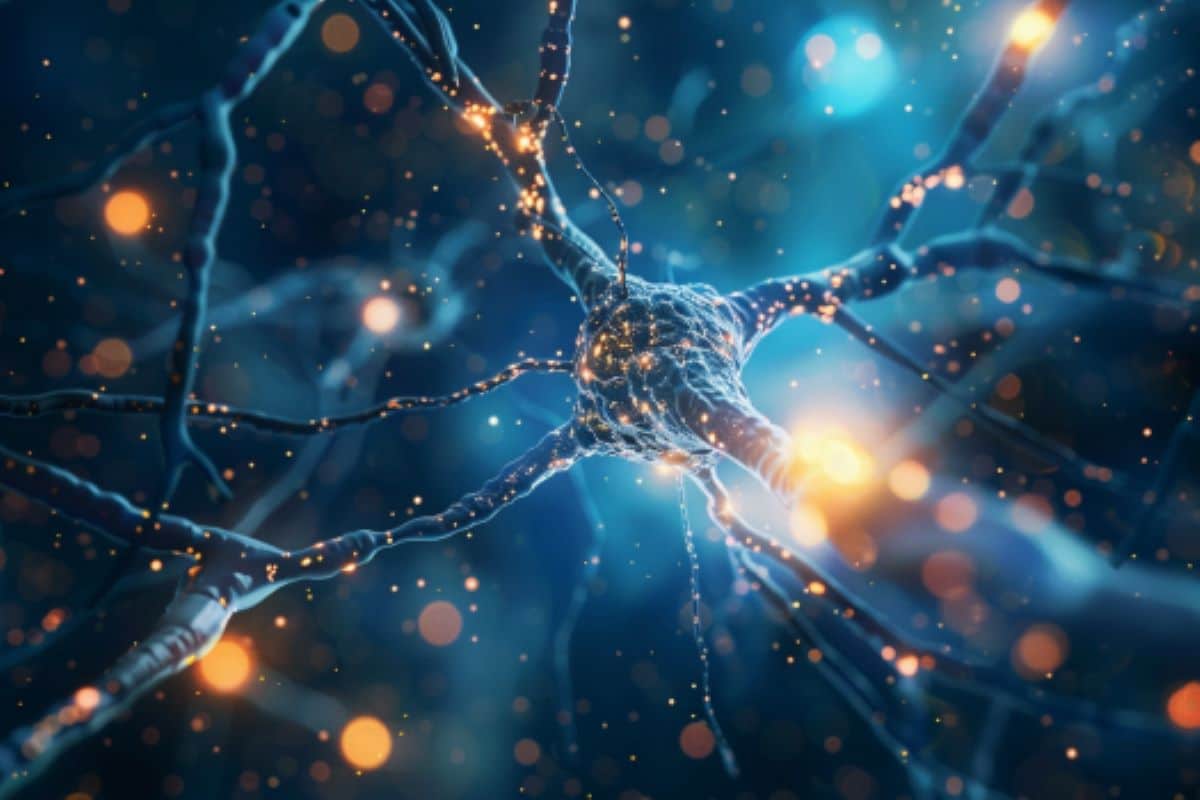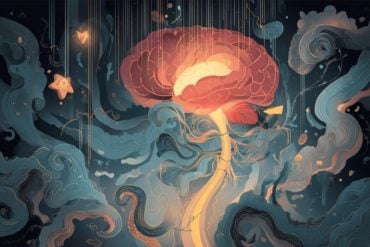Summary: A new study reveals how the FUS protein aggregates and spreads in frontotemporal dementia (FTD) and amyotrophic lateral sclerosis (ALS).
The research shows that misfolded FUS proteins act like prions, spreading disease within the brain and exacerbating neurodegeneration. This discovery opens new avenues for therapeutic strategies targeting protein aggregate spread.
Key Facts:
- FUS protein aggregates spread like prions, contributing to neurodegeneration in FTD and ALS.
- Injected FUS aggregates in mice caused cognitive decline and behavioral deficits.
- Understanding FUS aggregation mechanisms can lead to new therapies for neurodegenerative diseases.
Source: VIB
Frontotemporal dementia (FTD) and amyotrophic lateral sclerosis (ALS) are two devastating neurodegenerative diseases. Scientists have long suspected a protein called FUS might play a role, but the exact mechanism remained a mystery.
A new study by the lab of Prof. Sandrine Da Cruz published in Molecular Neurodegeneration reveals how the FUS protein behaves in these diseases, which is crucial for potential therapeutic interventions.

Frontotemporal dementia (FTD) is a form of early-onset dementia, accounting for approximately 10-20% of dementia cases. Unlike Alzheimer’s disease, which primarily affects memory, FTD is characterized by changes in personality, behavior, and language due to degeneration in the frontal and temporal lobes of the brain.
Amyotrophic lateral sclerosis (ALS), the most common degenerative motor neuron disease in adults, is characterized by a selective loss of motor neurons, resulting in progressive muscle weakness and paralysis, as well as swallowing and speech difficulties.
Patients usually succumb to the disease within 2 to 5 years after diagnosis. Every year, around 100.000 people die of ALS.
In both these diseases, a protein called ‘Fused in sarcoma’ (FUS) causes problems. Normally, FUS resides mostly in the cell’s nucleus, but in some patients, it clumps together (aggregates) in the cytoplasm.
A new study, led by Prof. Sandrine Da Cruz at the VIB-KU Leuven Center for Brain & Disease Research, reveals how these FUS aggregates spread and behave, contributing to neurodegeneration.
Spreading the disease
The researchers injected disease-associated human FUS aggregates into mice engineered to express human FUS protein. Remarkably, the aggregates acted like seeds, causing the endogenous human FUS protein in the mice to aggregate and spread to other regions of the brain.
“This finding suggests a prion-like mechanism, which is a process where proteins misfold and cause other proteins to misfold in a similar way, leading to the spread of disease within a body,” says Dr. Sonia Vazquez-Sanchez, co-first author of the study.
“In this case, misfolded FUS aggregates ‘corrupt’ healthy FUS proteins, which leads to a domino effect of detrimental FUS aggregation throughout the brain.”
The aggregation of FUS proteins exacerbated age-dependent cognitive decline and behavioral deficits in the mice. This process mirrors what is observed in human FTD and ALS, where protein aggregates spread and contribute to neurodegeneration.
Another important discovery was the species barrier to FUS aggregation. When human FUS fibrils were injected into mice, which express only mouse FUS, no aggregation occurred. This indicates that specific interactions between human FUS proteins may be necessary for the aggregation and spread.
Implications and future directions
This research supports the broader hypothesis that many neurodegenerative diseases, including Alzheimer’s and Parkinson’s, may involve prion-like mechanisms where misfolded proteins propagate by inducing similar misfolding in normal proteins. Understanding these mechanisms opens new avenues for therapeutic strategies aimed at halting or slowing disease progression by targeting the spread of protein aggregates.
The research team is currently investigating the specifics of FUS aggregate-induced neurodegeneration.
“Identifying the exact components of these aggregates and the brain regions most affected by their spread will be crucial for developing future therapeutic interventions,” concludes Prof. Sandrine Da Cruz.
Funding and collaborations
Progress in research is only possible through collaborations at the national and international levels. This research was conducted in close collaboration between the laboratories of Prof. Sandrine Da Cruz, Prof. James Shorter (UPenn), Prof. Don Cleveland (UCSD), and Prof. Lin Guo (Thomas Jefferson).
The research (team) was supported by the Research Foundation Flanders (FWO), the Muscular Dystrophy Association, Fondation Recherche Alzheimer – Stichting Alzheimer Onderzoek (STOPALZHEIMER.BE), Target ALS, ALSA, and the Robert Packard Center for ALS Research at Johns Hopkins.
About this neurology and genetics research news
Author: India Jane Wise
Source: VIB
Contact: India Jane Wise – VIB
Image: The image is credited to Neuroscience News
Original Research: Open access.
“Frontotemporal dementia-like disease progression elicited by seeded aggregation and spread of FUS” by Sandrine Da Cruz et al. Molecular Neurodegeneration
Abstract
Frontotemporal dementia-like disease progression elicited by seeded aggregation and spread of FUS
RNA binding proteins have emerged as central players in the mechanisms of many neurodegenerative diseases. In particular, a proteinopathy of fused in sarcoma (FUS) is present in some instances of familial Amyotrophic lateral sclerosis (ALS) and about 10% of sporadic Frontotemporal lobar degeneration (FTLD).
Here we establish that focal injection of sonicated human FUS fibrils into brains of mice in which ALS-linked mutant or wild-type human FUS replaces endogenous mouse FUS is sufficient to induce focal cytoplasmic mislocalization and aggregation of mutant and wild-type FUS which with time spreads to distal regions of the brain.
Human FUS fibril-induced FUS aggregation in the mouse brain of humanized FUS mice is accelerated by an ALS-causing FUS mutant relative to wild-type human FUS.
Injection of sonicated human FUS fibrils does not induce FUS aggregation and subsequent spreading after injection into naïve mouse brains containing only mouse FUS, indicating a species barrier to human FUS aggregation and its prion-like spread.
Fibril-induced human FUS aggregates recapitulate pathological features of FTLD including increased detergent insolubility of FUS and TAF15 and amyloid-like, cytoplasmic deposits of FUS that accumulate ubiquitin and p62, but not TDP-43.
Finally, injection of sonicated FUS fibrils is shown to exacerbate age-dependent cognitive and behavioral deficits from mutant human FUS expression. Thus, focal seeded aggregation of FUS and further propagation through prion-like spread elicits FUS-proteinopathy and FTLD-like disease progression.






